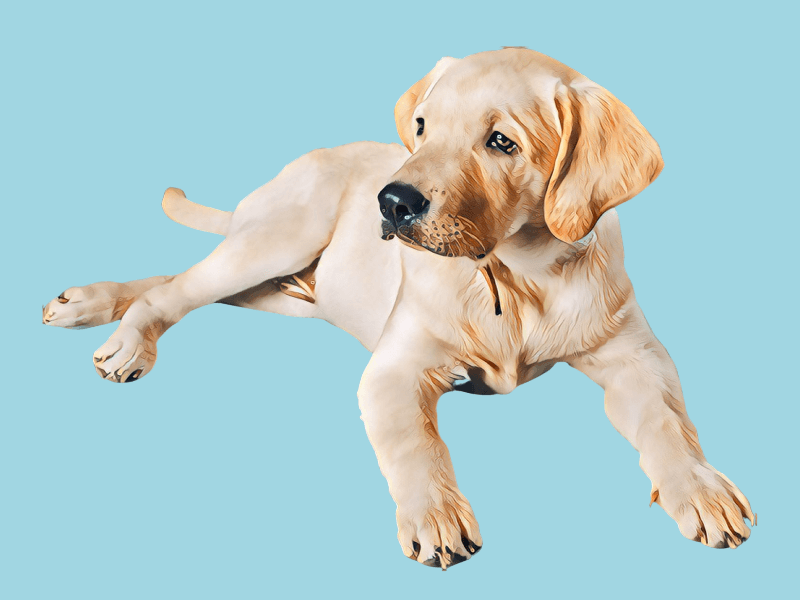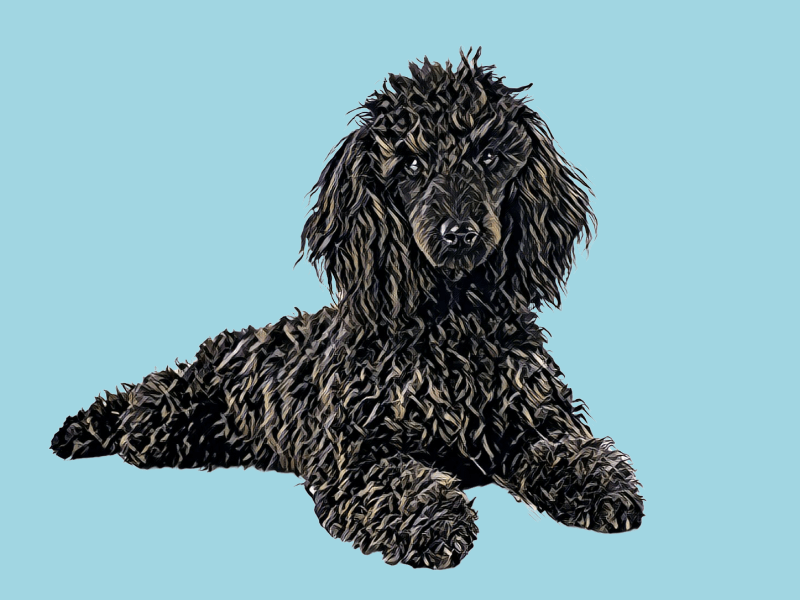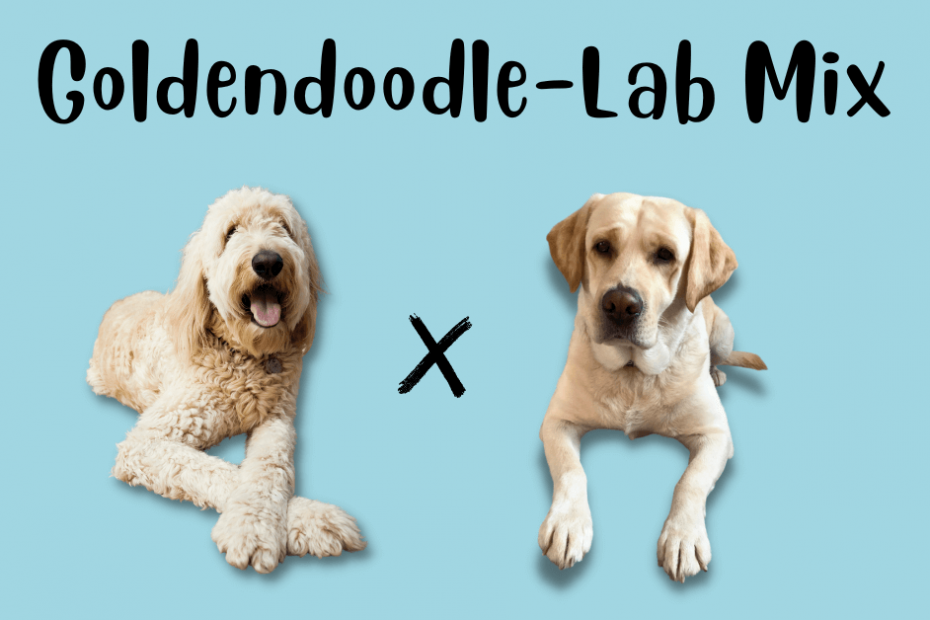It seems like just about everyday there is a new type of Doodle dog out there. Many breeders want to take advantage of the Poodle’s low-shedding coat and great traits.
But what about mixing a purebred dog with a Goldendoode? This article is going to explore the cross between a Labrador Retriever and a Goldendoodle.
In this guide, you’ll find information on the different dogs that make up the Goldendoodle-Lab mix, and hopefully, it’ll help you decide whether or not it is the perfect dog for you.
What is the Goldendoodle-Lab mix?
A Goldendoodle is a mix between a Golden Retriever and a Poodle. A Labrador Retriever is a purebred dog from Canada that was used for waterfowl retrieval and as an aid to fishermen. When you mix all three dog, you get the Goldendoodle-Lab mix.
This unique Doodle dog breed is the result of breeding an F1 Goldendoodle with a Labrador Retriever. F1 is the first generation, meaning the dog can have a good blend of both parents’ genes or take on more of one of the parents’ genetics than the other.
The Labrador Retriever and Goldendoodle breeds are two very popular dog breeds in the world today. And for good reason. They both have exceptional qualities that families often look for when it’s time to add a new furry friend to their family.
History of the Parent Breeds
As stated previously, a Goldendoodle is a mix between a Golden Retriever and a Poodle, so we’ll be diving into those breeds as well as the Labrador Retriever. Each breed comes from an interesting background that is worth checking out!
Labrador Retriever

Labradors originated from Labrador, Canada. Once they were discovered by the British, they were taken back to Great Britain, where they managed to grow and expand the breed.
Labs (Labrador Retrievers) were initially bred for bringing in fishing nets in the cold Canadian waters. They have a double coat (an inner and outer coat) for insulation.
Their bodies are built for the water. Their chests can push through the water just as the bow of a boat can. Their tales act as a rudder and help steer- although too much time in the water can sprain their tail, so watch for any pain or injury after spending a day in the water.
Goldendoodle
It is believed, that Goldendoodles were first bred by Monica Dickens, the great-granddaughter of the English author: Charles Dickens, in 1969.
They were bred to help allow those who suffer from dog allergies to enjoy the company of a dog with little to no shedding/dog dander.
However, Goldendoodles didn’t become popular until the 1990s. Goldendoodles are often used as therapy or service dogs due to their mild temperament.
Golden Retriever
The Golden Retriever is of Scottish descent and was first bred in the mid-1800s by Lord Tweedmouth. Lord Tweedmouth kept excellent records on his journey to produce the perfect dog for Scotland’s muddy and rainy climate.
After several attempts to work toward the ideal breed, Lord Tweedmouth was able to create the lovable Golden Retriever that we know and love today.
Golden Retrievers are intelligent and lovable dogs eager to please and enjoy romping around the backyard, going on hikes, and snuggling up next to their family members.
Many people enjoy having a Golden Retriever in their family because of these qualities.
Poodle

The Poodle has a low allergen coat which is perfect for those who have allergies to dogs. It comes in three sizes: toy, miniature, and standard. They originated from France and were bred to be water dogs.
Their coats’ typical haircut is designed for more than looks; the hair kept around their upper body and chest regions is left there to keep their vital organs warm when they swim around in colder bodies of water during a hunt.
Just like the other two breeds, Poodles are incredibly smart and teachable when it comes to training them. They are also very athletic and make a good running buddy if that is something you’re into.
Appearance
A Goldendoodle-Lab mix will likely have a long, wavy/curly coat. The curls will be inherited from the Goldendoodle (hence, Poodle) genes. The color of their coat has quite a range since it can pull from both parents’ gene pool.
The parents are the best indicator on what a Goldendoodle-Labrador mix’s coat type and color will be.
Labrador Coat
Labs have two coats: an inner layer and an outer layer.
Because of their two layers, they shed their undercoat twice a year. This generally happens in the spring and fall seasons (getting rid of extra fur and adding more fur to accommodate the seasonal changes).
Labs mainly come in three different colors: black, chocolate, and yellow.
Goldendoodle Coat
Goldendoodles generally have shaggy and curly coats depending on the genetics they take from their parents and what generation they are (F1, F2, etc.).
Goldendoodles usually have little to no shedding, but their level of shedding ultimately depends on the genetic traits they take on from their parents and what generation they are.
Depending on the parent’s colors, they can come in shades of amber, brown, black, red, gray, white, cream, auburn, merle, blonde, gold, and yellow.
Size
Female Labs range from 21.5 to 23 inches tall, while males range from 22 to 25 inches tall. A female Labrador can weigh as little as 55 pounds, and the males can weigh up to 80 pounds.
Female Goldendoodles range from 22 to about 23 inches, whereas males range from 24 to 25 inches. A Goldendoodle’s weight depends on several factors, including its parent’s genetics to what size they are.
Are they a toy, miniature, or standard size? On average, a Goldendoodle ranges anywhere from 15 pounds to 30 pounds but can weigh as much as 100 pounds!
Depending on the parents, a Labrador Retriever-Goldendoodle will probably be relatively tall and a decent weight. If you want a smaller dog, I’m not sure this is the dog for you.
Temperament and Traits
Labs are a gentle and pleasant breed. They live to please people and are great with young children and elderly individuals.
Goldendoodles are a happy and outgoing breed. They too live to please their owners and are good with young children. Goldendoodles rarely bark, so they may not be the best choice for finding a guard dog.
Both breeds are exceptionally smart and willing to learn. However, both Labs and Goldendoodles need exercise.
Make sure you have enough space to get all their energy out; if you don’t, try taking them on long walks or throwing their favorite ball or toy at the local park (or dog park). Both breeds are content to snuggle in for the night and be surrounded by their family.
The following infographic is a summary of the breed’s traits.

Health Issues
All three breeds involved in a Labrador Retriever-Goldendoodle mix are susceptible to hip dysplasia. Many breeders will do genetic testing before releasing a puppy to their new family if there is any question about the puppy’s health.
Some breeders also give a two-year health guarantee to the puppies in their care and are willing to make sure they do everything in their power within those two years if any health issues do come up.
If you have any questions about a health warranty the breeder you are interested in has, ask them. If they are a reputable breeder, they will be more than happy to answer any questions you have when searching for a new puppy.
Lifespan
On average, Labrador Retrievers have a lifespan of 10-12 years. However, some breeders who have been in the business long enough and ensure they provide the healthiest dogs have been able to see some of their puppies live as long as 16 years!
Goldendoodles live anywhere from 10 to 15 years, depending on their health and the lifestyle of their families.
It is safe to say that a Labrador-Goldendoodle mix will live at least ten years, if not longer, as long as it is appropriately cared for and has taken on the best genetics from its parents, grandparents, great-grandparents, and so on.
Once again, check with the breeder to see their puppies’ average lifespan and if there is anything you can do to ensure the dog you want will have a long and the best life possible.
Final Thoughts
A Labrador Retriever-Goldendoodle will most likely be the dog of your dreams. They are intelligent, family-friendly, will most likely have low allergen coats- perfect for anyone with allergies to dogs, are eager to learn new things, and are always down for some snuggles.
If you are looking for this unique breed, make sure you are doing the work and finding the best breeder, even if that means traveling somewhere distant. That way, you can ensure you are getting the best puppy for the price you are paying; it’ll be worth it in the long run.
Hopefully, you were able to take something or two out of this complete guide on the Labrador Retriever-Goldendoodle, the history of the three breeds involved, and all the little details that make up this eccentric breed.
Related Posts
- Learn everything there is about the Golden Retriever-Poodle mix.
- Looking for a smaller-sized Goldendoodle? Check out the Mini English Goldendoodle.
- No, it’s not a Kangaroo. It’s an Australian Goldendoodle!


